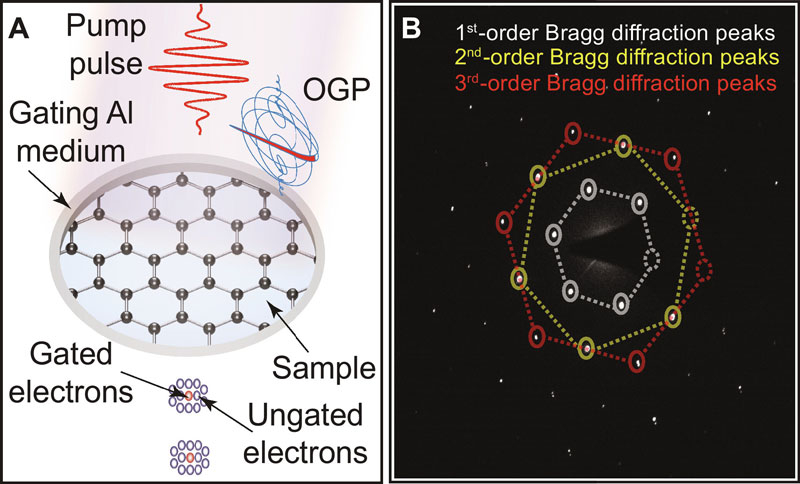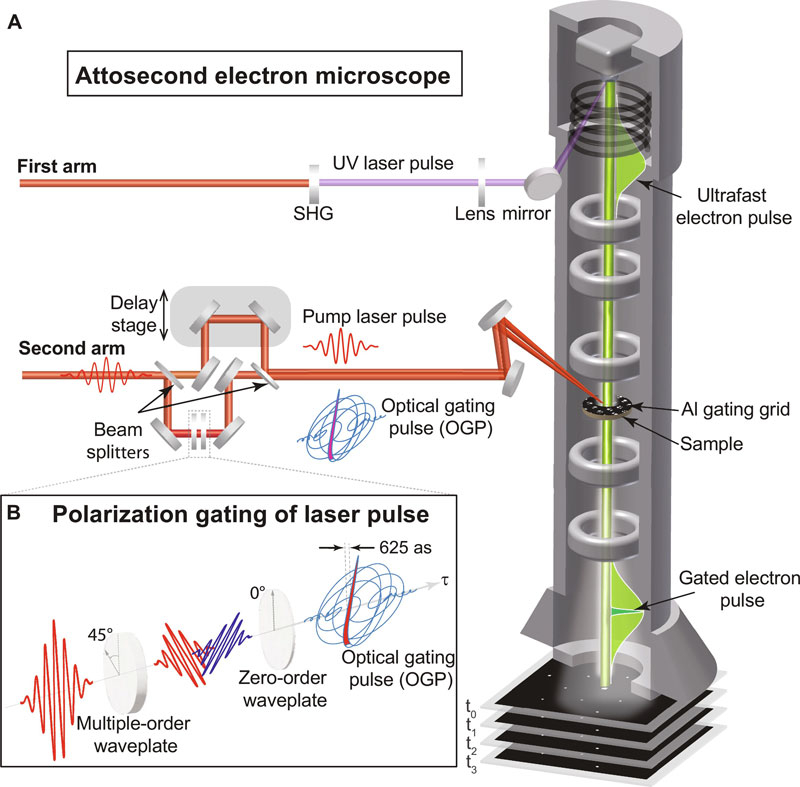The research, which was awarded the Nobel Prize in Physics in 2023, formed the basis for the development of an “attomicroscope” capable of “delaying” the passage of time down to one attosecond. This brings scientists into the time scale of electrons’ lives – allowing them to literally see their movement, something that could only be dreamed of before. The device, created at the University of Arizona, was the first to provide such detail in the subatomic world.

Representation of one electron in motion. Image source: Science Advances
There are 1018 attoseconds in every second. This is much more than seconds have passed since the Big Bang. Getting to this time scale means getting closer to precise measurements for the needs of quantum science and basic research. Previously, the record for “freezing” time was a scale of 43 attoseconds. Scientists from the USA have created a microscope that has reduced it to 1 attosecond.

Block diagram of an “attomicroscope”
Scientists described the operating principle of the device in an article in the journal Science Advances. An ultraviolet laser pulse is supplied to the installation. The laser knocks out an ultra-fast electron pulse from the photocathode. Two other laser pulses are supplied through the second channel, one of which is polarized, and the second serves as a pump to “revive” electrons in the sample. The polarized pulse gates a fast electron pulse and this provides a reference point for measurements, which are recorded at the output of the microscope in the form of a diffraction pattern of the electronic dynamics of the substance.
Using this technique, the team was able to generate electron pulses lasting just one attosecond, allowing them to observe ultra-fast electron movement that would normally be impossible to see. The researchers say this breakthrough could have applications in quantum physics, chemistry and biology.